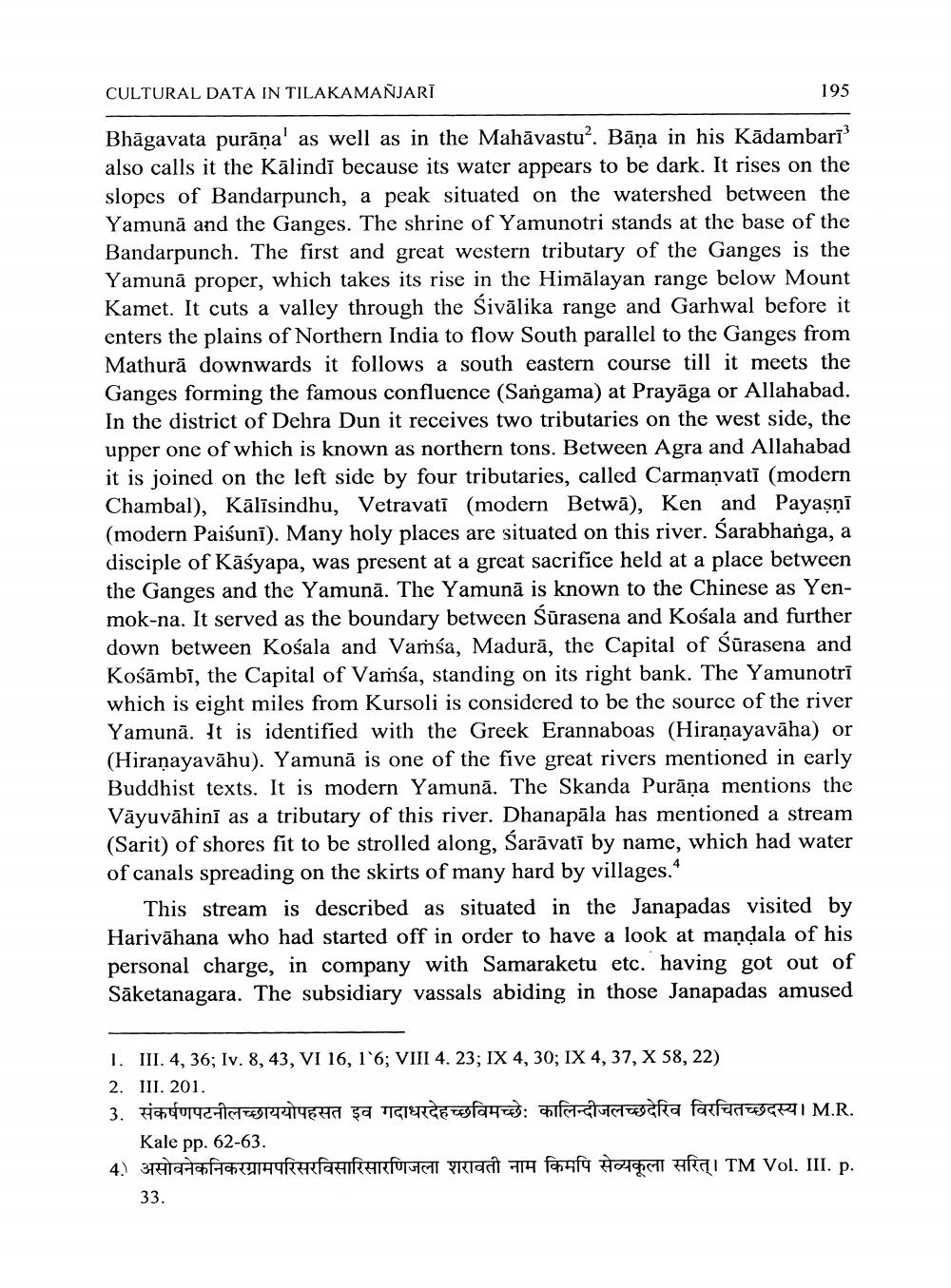________________
CULTURAL DATA IN TILAKAMANJARĪ
Bhagavata purana' as well as in the Mahävastu?. Bana in his Kādambarī1 also calls it the Kālindī because its water appears to be dark. It rises on the slopes of Bandarpunch, a peak situated on the watershed between the Yamuna and the Ganges. The shrine of Yamunotri stands at the base of the Bandarpunch. The first and great western tributary of the Ganges is the Yamuna proper, which takes its rise in the Himalayan range below Mount Kamet. It cuts a valley through the Sivälika range and Garhwal before it enters the plains of Northern India to flow South parallel to the Ganges from Mathura downwards it follows a south eastern course till it meets the Ganges forming the famous confluence (Sangama) at Prayaga or Allahabad. In the district of Dehra Dun it receives two tributaries on the west side, the upper one of which is known as northern tons. Between Agra and Allahabad it is joined on the left side by four tributaries, called Carmanvatī (modern Chambal), Källsindhu, Vetravati (modern Betwä), Ken and Payaṣṇī (modern Paiśuni). Many holy places are situated on this river. Sarabhanga, a disciple of Kasyapa, was present at a great sacrifice held at a place between the Ganges and the Yamuna. The Yamuna is known to the Chinese as Yenmok-na. It served as the boundary between Sürasena and Kosala and further down between Kosala and Varśa, Madura, the Capital of Sarasena and Kosambi, the Capital of Vamsa, standing on its right bank. The Yamunotri which is eight miles from Kursoli is considered to be the source of the river Yamuna. It is identified with the Greek Erannaboas (Hiranayavāha) or (Hiranayavahu). Yamuna is one of the five great rivers mentioned in early Buddhist texts. It is modern Yamuna. The Skanda Purana mentions the Vāyuvahini as a tributary of this river. Dhanapala has mentioned a stream (Sarit) of shores fit to be strolled along, Śaravati by name, which had water of canals spreading on the skirts of many hard by villages."
195
This stream is described as situated in the Janapadas visited by Harivahana who had started off in order to have a look at mandala of his personal charge, in company with Samaraketu etc. having got out of Säketanagara. The subsidiary vassals abiding in those Janapadas amused
1. III. 4, 36; Iv. 8, 43, VI 16, 1'6; VIII 4. 23; IX 4, 30; IX 4, 37, X 58, 22)
2. III. 201.
3. संकर्षणपटनीलच्छाययोपहसत इव गदाधरदेहच्छविमच्छेः कालिन्दीजलच्छदेरिव विरचितच्छदस्य। M.R. Kale pp. 62-63.
4. असोवनेकनिकरग्रामपरिसरविसारिसारणिजला शरावती नाम किमपि सेव्यकूला सरित् । TM Vol. III. p.
33.




